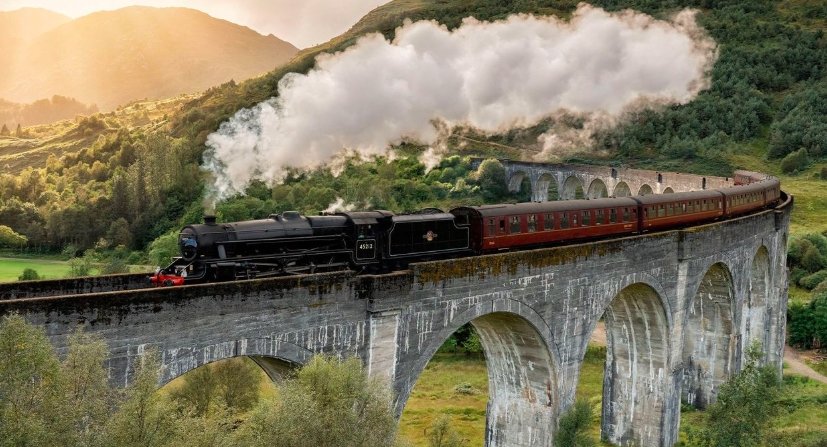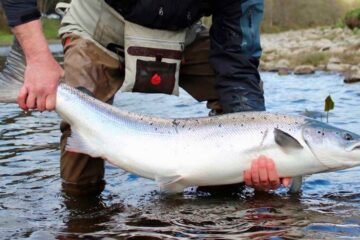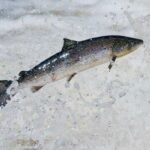Scotland’s Far North Line is an unforgettable railway adventure that transports travelers through some of the most remote and beautiful landscapes in the country. Stretching from Inverness to Thurso and Wick, the journey covers 168 miles of rugged beauty, connecting travelers to the vast wilderness of the Scottish Highlands, including the world’s only UNESCO-listed blanket peat bog, the Flow Country.
The Far North Line: A Journey into Scotland’s Wild Heart
Starting from Inverness at 07:00, the train ride offers an immersive experience into the heart of the Highlands. As the train departs, it moves through sweeping sheep meadows, traditional villages, and endless expanses of land.
-
The train’s route offers a glimpse into the raw, untamed landscape of northern Scotland, where the gentle hills and sprawling farmland set the tone for the journey ahead.
-
While passengers sip on their morning coffee, they are treated to views of quaint towns like Conon Bridge and Invergordon before venturing deeper into the Highlands.
This scenic route not only provides the serenity of rural Scotland but also the historical charm of the Far North Line, which was built in the late 19th century to boost trade, particularly in fishing and agriculture. Despite harsh weather, difficult terrain, and financial challenges, the line was completed and eventually reached its northern terminus in Wick in 1874.

A Glimpse of History and Scenic Beauty
The journey is rich in history, with notable stops like Dunrobin Castle Station, which was designed in 1902 and evokes a fairytale-like charm. The station is one of the most picturesque on the route, with its Alpine cottage architecture and remote setting. Although the train doesn’t stop here on the journey, its image is a reminder of the royal history of the region, tied to the Duke of Sutherland who was instrumental in the railway’s construction.
As the train nears the coastline between Brora and Helmsdale, the views become even more dramatic. The shoreline’s jagged black stones and crashing waves meet the tranquil fields where sheep graze, and local residents go about their morning routines with their dogs.
The Flow Country: UNESCO’s First Peatland World Heritage Site
One of the key highlights of the Far North Line is the passage through the Flow Country, an area that has recently been granted UNESCO World Heritage status for its unique ecosystem. Covering an area of 1,544 square miles, the Flow Country is the largest and most intact blanket peat bog in the world.
-
The peat bog is home to a rare and diverse range of bird species and plant life not found anywhere else, making it a paradise for nature lovers and environmentalists alike.
-
UNESCO recognized the area for its remarkable biological significance, placing it alongside natural wonders like the Great Barrier Reef and the Galápagos Islands.
Dr. Roxane Andersen, a Peatland Science expert, explains that the Flow Country’s UNESCO recognition brings attention to the delicate ecosystem and the need for conservation efforts to preserve its rich biodiversity.
The Remoteness of the Highlands
The true appeal of the Far North Line is its unparalleled remoteness. As you travel through the Highlands, the sense of isolation and tranquility is tangible. The long stretches of moorland, the silence of the vast bogs, and the view of eagles soaring above the hills all contribute to an almost otherworldly feeling.
-
Passengers can expect to feel a deep connection to the landscape, with no distractions, just the raw beauty of nature unfolding before them.
-
The train journey becomes an intimate experience, allowing travelers to reflect on the untouched beauty of one of Scotland’s most remote corners.
Why Ride the Far North Line?
The Far North Line offers more than just a way to travel between towns; it’s an opportunity to connect with nature and history in one of the most remote parts of the UK. Whether you’re an avid train enthusiast, a nature lover, or simply in search of solitude, this journey delivers on all fronts. It’s a unique adventure that invites passengers to experience the heart of the Highlands, where time seems to slow, and the land holds stories of centuries past.


















